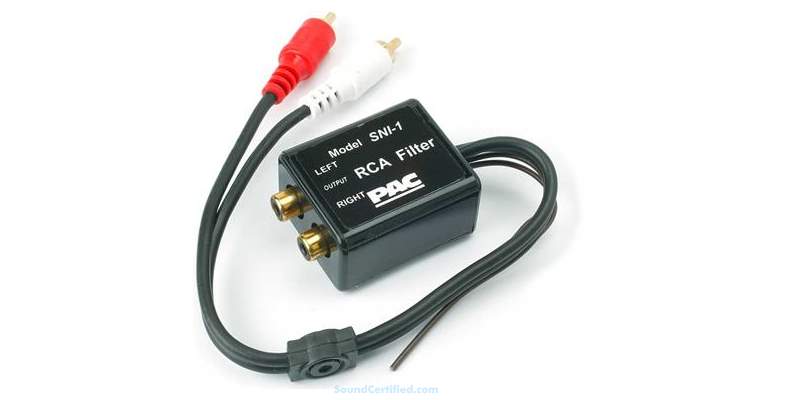


The choke (humbugging transformer) is primarily used in Broadcast TV because it passes the DC component of the signal. Some of the isolation transformers are only designed for CCTVĪpplication, where more signal distortion is accepted than in Is very hard to produce so there are not many of them on the market. Nicely transfer the whole video frequency spectrum without much distortion There are also special wideband isolation transformer The video path to cancel unwanted ac hum. That introduces a small amount of voltage at power-line frequency into Generally term hum-bugger refers to any circuit (often a special coil)

"anti-hum video transformers" or "hum suppressor transformers". The transformers of this type are usuallyĬalled "hum bug transformers", "humbucking transformers",

#Video ground loop noise isolator professional
Their way to the professional video application (rental companies)Īnd comouter video applivations (computer to video projector connections). This type of hum suppression transformers have found This kind of devicesĪre capable of passing the signals from DC to tens of MHz without Ground loop currents on the shield of the coaxial calbe, but provideĪ straight path for the signal inside the cable. Transformers act like a common mode coils, which stop the annoying (typically around 40 dB hum level reduction),īut do not effect the video signal otherwise. Which will very effectively remove the hum from the video signal There are passive hum suppressor transformers Ground loop elemination does not always ask for a complete isolation Of isolation devices on the market and some special video distributionĪmplifiers have this kind of option built in. Which use twisted pair interfacing equipments).Įlectro-optical isolation works well in applications where completeĮlectrical isolation is necessary. Is transmitted through twisted pair wiring (some CCTV applications Have had differential inputs and option to disconnect input ground connection).ĭifferential inputs are also used in applications where a video signal In some professiona video equipments (some video projectors I have seen Differential input with floating ground works nicelyįor small ground potential differences and this approach is used Those both technologies are usable in real Isolating video signal needs typically active technology which involvesĮlectro-optical isolation or differential amplifier with a floating ground (normal composite video can have bandwidth from 50 Hz to 6 Mhz). Is important and video signals have very high frequency spectrum Or antenna signals, because the DC level of the video signal Isolating video signal is more complicated than isolating audio Cross-Talk: Ground loops can cause one signal to interfere with another, because every cable should ideally return through the corresponding shield conductor, but there's an alternative path through the other shield conductor which causes undesirable voltage differences to nearby cables.These antennas are especially adept at picking up AM broadcasts if most of the loop is vertical. Any large loop of wire makes a good AM antenna. RF Interference: Herring bone interference on video line is caused by a ground loop (that includes your coax shield) acting as an AM radio antenna.If you have light dimmers nearby those humming bars can easily become quite severe and easily visible. Hum Bars: The mains frequency (50 Hz or 60 Hz) can cause stationaly or moving horizonal humming bar to appear on the video signal (as shown on the picture above).Ground loops in the video systems can have following effects: TV signal because of ground loops in the system. The picture below is a real world example of the effects of a ground loopĪnd what it causes a a video picture received from the cable TV network:Īd you can see that video signal has strong hummign bars and Typically they are not as visible because bars are moving so fast that you see The same kind of bars can be also seen in computer screen, but Typically the humming can be seen as slowly vertically moving horizonal bars in Video hum may be a problem in any system where video sources and displayĭevices are connected to different A/C power sources with varying grounding potentials. The video image, video hum may also cause video distortion or even tearing of the picture in Video hum is usually observed as bars rolling vertically through The ground lines which has influenced the video signal,Ĭausing degradation of the displayed signal. Video hum is low frequency (50 or 60 Hz mains frequency or it's harmonics) noise from As the source and destination of a video signal can be at differing ac or dc earth potentials, earth loop currents flow and cause longitudinal hum to be introduced into the video signal.


 0 kommentar(er)
0 kommentar(er)
